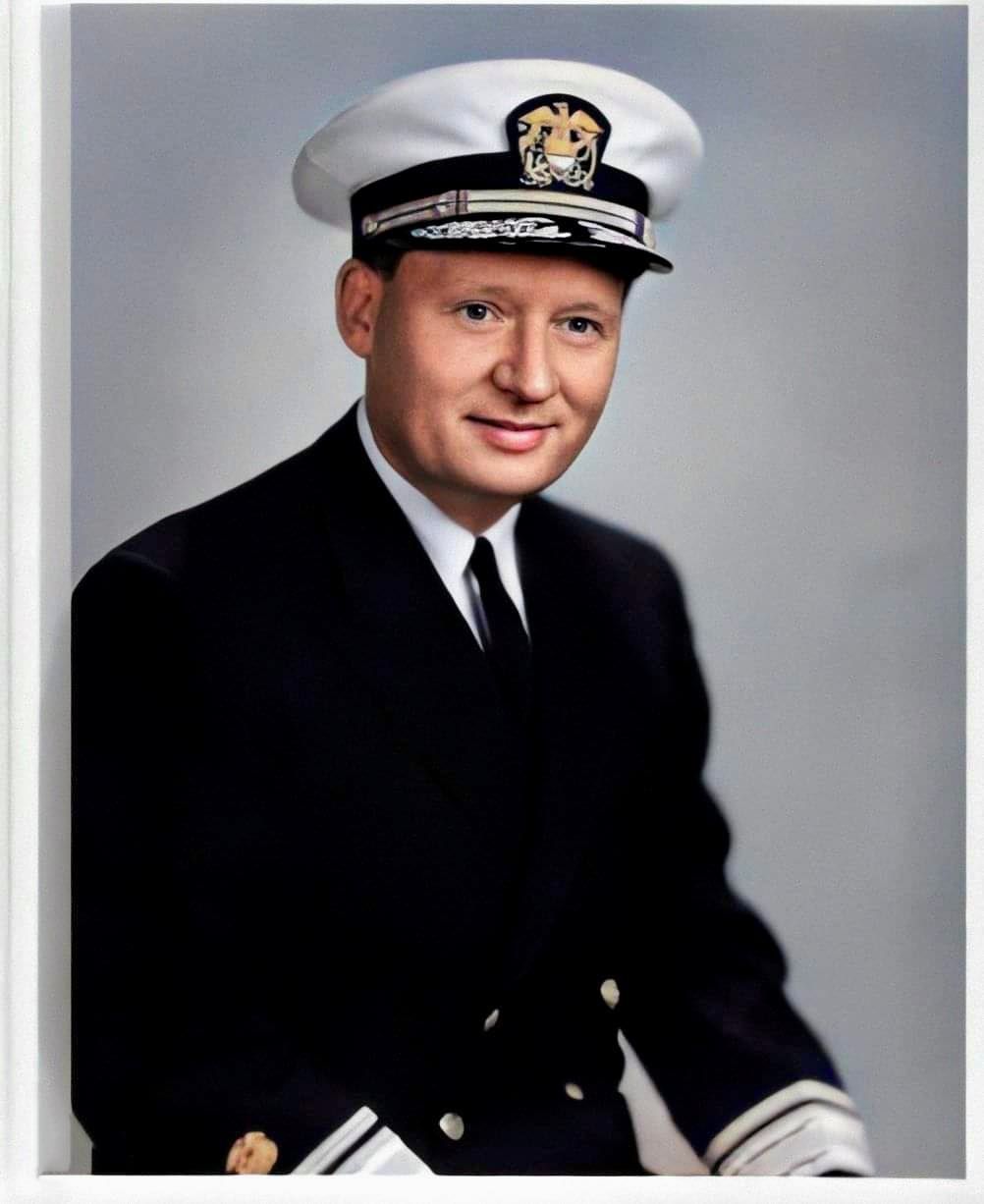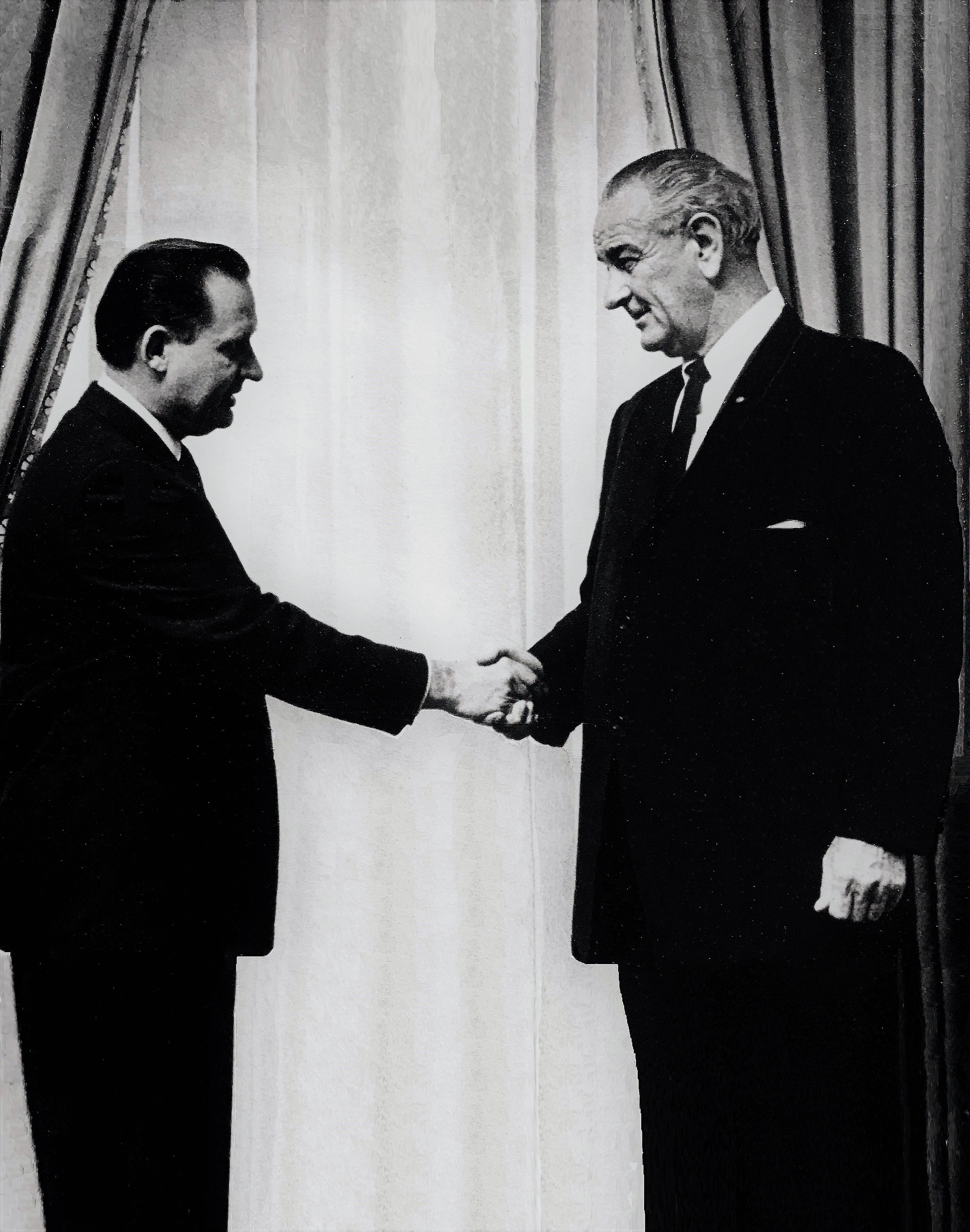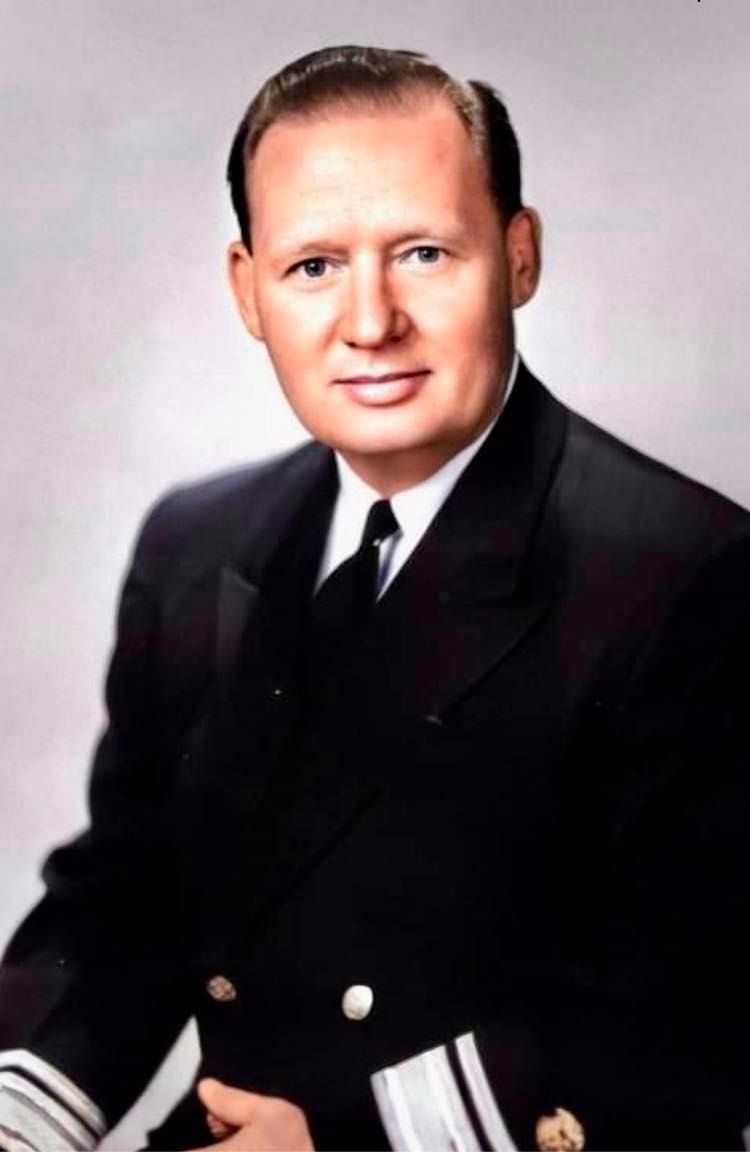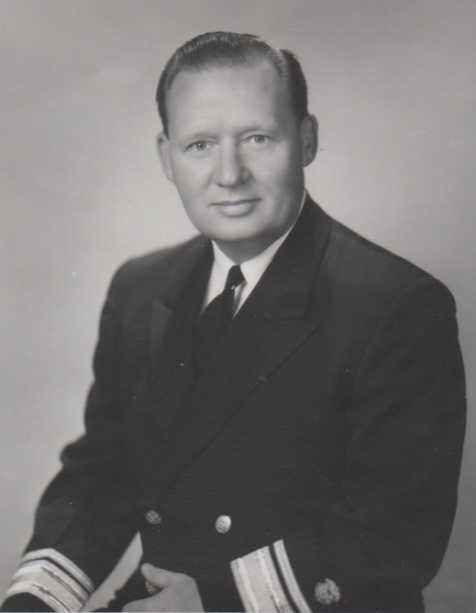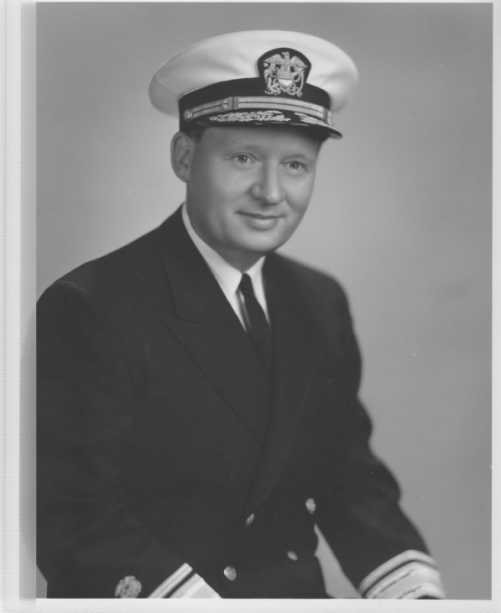Deputy Chief, Bureau of Medical Services, U.S. Public Health Service, 1962-1964
Chief, Bureau of Medical Services, U.S. Public Health Service, 1964-1966
Deputy Surgeon General of the United States, 1966-1970
US Public Health Service, Commissioned (Uniformed) Corps, 1945-1970, final rank, RADM
Director, Washington Office, American Hospital Assoc. (AHA), 1970-1980
From the Peace Corps website:
In one of the major, early decisions in Peace Corps history, (President John F. Kennedy's brother-in-law, Sargent Shriver decided to try to get the U.S. Public Health Service to assume responsibility for the health of Peace Corps Volunteers around the world. The Surgeon General agreed to do so. More than that, he designated a physician-administrator to the Peace Corps staff as Medical Director, Dr. Leo Gehrig.
The man who set up the Medical Division was an honor graduate of the University of Minnesota Medical School and veteran surgeon with the U.S. Public Health Service. Part of his career was spent roaming Alaska in a campaign against tuberculosis and part on the high seas—as ship's physician aboard the three-masted Coast Guard sailing ship, "Eagle". An interest in the health problems of seafarers led to a wider interest in medical problems of persons for whom health facilities were not readily available, and this fitted right in with the situation of many Volunteers.
From the US Public Health Service website (in part):
Former Deputy Surgeon General RADM Leo J. Gehrig (retired) Passes
Former deputy surgeon general Leo Joseph Gehrig passed on December 19, 2010 at his home in North Oaks, Minnesota. Dr. Gehrig, who lived in Washington, DC from 1957 to 2009, spent most of his career with the Commissioned Corps of the U.S. Public Health Service (Corps).
Under Surgeon General of the United States, Dr. William H. Stewart, 1965-1969, Dr. Gehrig was appointed the deputy surgeon general of the Corps in 1966. He retired as a Rear Admiral in 1970.
Dr. Gehrig was born in Mapleton, Minnesota, the eldest son of Paul and Marcella (Hund) Gehrig. His father worked for the Chicago, Milwaukee, St. Paul Railroad (Milwaukee Road) for 45 years, working his way up the ladder from telegrapher at Watson, MN to head freight agent at Duluth, MN. During summer break at the University of Minnesota when he was 20, Leo, his parents and four younger siblings, were on the Milwaukee Road's Olympian bound from Minneapolis to Los Angeles for a family vacation to the West Coast and to visit relatives there. At 1235 am on June 18, as the train sped through the darkness in Prairie County, Montana, it crossed the bridge at Custer Creek near Saugus, unaware that some of the wooden supports had been washed away in a flash flood earlier that night. The bridge collapsed, hurtling the engine into the creekbank and dumping the seven passenger cars into the swollen rapids. At least 47 people died, including the engineer and fireman, and 75 were injured.
Leo, his two younger brothers, Paul, 16, Jack, 14, and their dad helped other passengers to escape the partially submerged Pullman cars in the darkness of the rapidly flowing creek, and their selfless acts were recounted in the newspapers. None of the seven Gehrigs, including Marcella and her two daughters, Barbara, 18 and Maureen, 7, were injured beyond bruises. The Custer Creek train wreck (sometimes called the Saugus train wreck), was the worst rail disaster in Montana history and the worst US rail disaster of the 1930s.
Leo received bachelor's and medical degrees from the University of Minnesota in 1941 and 1945, respectively. He completed an internship at the County General Hospital in Salt Lake City, Utah, and was the acting director of tuberculosis control with the Alaska Department of Health before joining the Corps in 1945.
From 1947 to 1950, he was a resident in surgery at Overholt Thoracic Clinic in Boston. In 1951, he was chief of thoracic surgery at the Public Health Service (PHS) hospital at Staten Island, New York. In 1955, he became the deputy chief of surgery at the PHS hospital in Seattle.
From 1957 and for 4 years, he assumed the role of deputy chief of Division of Hospitals in Washington, DC. He was the first medical director of the U.S. Peace Corps before he was named the chief of the Bureau of Medical Services, in 1964.
As Deputy Surgeon General Gehrig, he emphasized communication in delivering a keynote address; the rules were the same from a physician to a patient as a teacher to a student and a computer to a computer. He defined the time-lag between research and application as a communication gap. He also stressed that better communication is important for scientist to know what colleagues are doing and to guide research.
As acting surgeon general in 1967, he testified at a uranium mining radiation standards congressional hearing and projected that 529 miners may have died due to lung cancer and 98 lung cancer related deaths since 1963. 1n 1990, 25 years later, Congress finally passed the Radiation Exposure Compensation Act.
Mining for radioactive material exposed countless individuals to radiation and left thousands of acres abandoned and unreclaimed from mines and tailings across the country, predominantly on Native American tribal lands.
After his retirement from the Corps, Dr. Gehrig joined the American Hospital Association and was director of its Washington office when he retired in 1980. He was a diplomate of the American Board of Surgery and American Board of Thoracic Surgery, and a member of Alpha Omega Alpha Honor Medical Society.
He was survived by his wife, Marilyn, and two sons, Greg and Mark, two grandchildren, two brothers, two sisters and many nieces and nephews.
From the Minneapolis Star Tribune, 1/6/11:
Dr. Leo Gehrig was tireless health advocate
His passion and efforts for public health, especially with the Peace Corps, took him around the globe.
From a humble start in the farming town of Mapleton, Minn., Dr. Leo Gehrig would travel the globe in a career ending with the rank of rear admiral with the U.S. Public Health Service (PHS), in which he was deputy surgeon general.
Gehrig was also the first medical director of the Peace Corps when it was created in 1961, helped to see that segregated hospitals in the South complied with the Civil Rights Act of 1964, was the physician on the Coast Guard's tall ship USS Eagle and established sanitariums in Alaska.
Gehrig, 92, died Dec. 19 at his home in North Oaks. He had Alzheimer's disease.
"He had a good life -- he did a lot of things," said his wife, with whom he shared a bond of love, adventure and devotion to duty for 66 years.
The eldest of six children, Leo Gehrig worked at banks in North Dakota and Montana to save money to attend the University of Minnesota, from which he received his medical degree in 1945, she said. A rheumatic heart condition kept him from combat duty in World War II, but he joined the PHS -- one the nation's seven uniformed services -- while an intern in Utah.
His first assignment was to establish sanitariums to treat tuberculosis patients in Alaska, then a U.S. territory, Marillyn Gehrig said. He then went to Boston for thoracic surgery training and spent five years in Staten Island, N.Y. While there, he took a three-month assignment on the USCGC Eagle.
In 1957, after spending time as chief of thoracic surgery at a Seattle hospital, he became deputy chief of the PHS hospitals division. Four years later, he was tapped to be the first medical officer of the Peace Corps, a program championed by President John F. Kennedy.
"He was just so proud of these young people," said his wife. Gehrig was in charge of seeing to the medical care of the volunteers and the public health initiatives of the corps. The work took him to Africa, India, South America and elsewhere.
Surgeon General William Stewart (a Minneapolis native) then picked him to be deputy surgeon general, she said. An early task was to travel to the South to help integrate hospitals after the Medicare program was created in 1965. Like schools, hospitals had followed a "separate-but-equal" policy, and the law required an end to such discrimination.
Gehrig retired from PHS in 1970, then joined the American Hospital Association, serving as Washington office director for 10 years.
In a 1990 interview for the Lyndon B. Johnson Library's oral history archives, Gehrig fondly recalled the Peace Corps, and the young volunteers who shared his idealism and drive to make the world a better, healthier place. "Lee" Gehrig was eminently qualified for the positions of public trust that he held based on his merits as a highly skilled thoracic surgeon, and a 25-year, career officer with the Commissioned (Uniformed) Corps of the U.S. Public Health Service. He was the antithesis of a modern-day political appointee and "instant admiral", festooned with a chestful of poly-chromatic ribbons on the day they first put on a uniform and beholden to a divisive, political agenda.
"I had a period of my life, of two years, that I have looked back upon as some of the most rewarding time that I've spent," he said. "And one of the times in life where it seemed that everything you touched had enthusiasm, and the quality of the people, and the volunteers, were absolutely fabulous."
In retirement, as throughout his life, "Lee" was constantly learning and "tinkering". He mastered a few languages, took many community college courses, was an avid ham radio operator, and traveled across the globe with Marilyn. When he was in his mid 80s, the couple sold their longtime home on Alton Place near American University, where they had raised their two sons, and moved back to Stillwater, MN, Marilyn's hometown.
Lee's funeral mass was celebrated at 11 a.m. the Friday following his death, at St. Michael's Catholic Church in Stillwater.
Deputy Chief, Bureau of Medical Services, U.S. Public Health Service, 1962-1964
Chief, Bureau of Medical Services, U.S. Public Health Service, 1964-1966
Deputy Surgeon General of the United States, 1966-1970
US Public Health Service, Commissioned (Uniformed) Corps, 1945-1970, final rank, RADM
Director, Washington Office, American Hospital Assoc. (AHA), 1970-1980
From the Peace Corps website:
In one of the major, early decisions in Peace Corps history, (President John F. Kennedy's brother-in-law, Sargent Shriver decided to try to get the U.S. Public Health Service to assume responsibility for the health of Peace Corps Volunteers around the world. The Surgeon General agreed to do so. More than that, he designated a physician-administrator to the Peace Corps staff as Medical Director, Dr. Leo Gehrig.
The man who set up the Medical Division was an honor graduate of the University of Minnesota Medical School and veteran surgeon with the U.S. Public Health Service. Part of his career was spent roaming Alaska in a campaign against tuberculosis and part on the high seas—as ship's physician aboard the three-masted Coast Guard sailing ship, "Eagle". An interest in the health problems of seafarers led to a wider interest in medical problems of persons for whom health facilities were not readily available, and this fitted right in with the situation of many Volunteers.
From the US Public Health Service website (in part):
Former Deputy Surgeon General RADM Leo J. Gehrig (retired) Passes
Former deputy surgeon general Leo Joseph Gehrig passed on December 19, 2010 at his home in North Oaks, Minnesota. Dr. Gehrig, who lived in Washington, DC from 1957 to 2009, spent most of his career with the Commissioned Corps of the U.S. Public Health Service (Corps).
Under Surgeon General of the United States, Dr. William H. Stewart, 1965-1969, Dr. Gehrig was appointed the deputy surgeon general of the Corps in 1966. He retired as a Rear Admiral in 1970.
Dr. Gehrig was born in Mapleton, Minnesota, the eldest son of Paul and Marcella (Hund) Gehrig. His father worked for the Chicago, Milwaukee, St. Paul Railroad (Milwaukee Road) for 45 years, working his way up the ladder from telegrapher at Watson, MN to head freight agent at Duluth, MN. During summer break at the University of Minnesota when he was 20, Leo, his parents and four younger siblings, were on the Milwaukee Road's Olympian bound from Minneapolis to Los Angeles for a family vacation to the West Coast and to visit relatives there. At 1235 am on June 18, as the train sped through the darkness in Prairie County, Montana, it crossed the bridge at Custer Creek near Saugus, unaware that some of the wooden supports had been washed away in a flash flood earlier that night. The bridge collapsed, hurtling the engine into the creekbank and dumping the seven passenger cars into the swollen rapids. At least 47 people died, including the engineer and fireman, and 75 were injured.
Leo, his two younger brothers, Paul, 16, Jack, 14, and their dad helped other passengers to escape the partially submerged Pullman cars in the darkness of the rapidly flowing creek, and their selfless acts were recounted in the newspapers. None of the seven Gehrigs, including Marcella and her two daughters, Barbara, 18 and Maureen, 7, were injured beyond bruises. The Custer Creek train wreck (sometimes called the Saugus train wreck), was the worst rail disaster in Montana history and the worst US rail disaster of the 1930s.
Leo received bachelor's and medical degrees from the University of Minnesota in 1941 and 1945, respectively. He completed an internship at the County General Hospital in Salt Lake City, Utah, and was the acting director of tuberculosis control with the Alaska Department of Health before joining the Corps in 1945.
From 1947 to 1950, he was a resident in surgery at Overholt Thoracic Clinic in Boston. In 1951, he was chief of thoracic surgery at the Public Health Service (PHS) hospital at Staten Island, New York. In 1955, he became the deputy chief of surgery at the PHS hospital in Seattle.
From 1957 and for 4 years, he assumed the role of deputy chief of Division of Hospitals in Washington, DC. He was the first medical director of the U.S. Peace Corps before he was named the chief of the Bureau of Medical Services, in 1964.
As Deputy Surgeon General Gehrig, he emphasized communication in delivering a keynote address; the rules were the same from a physician to a patient as a teacher to a student and a computer to a computer. He defined the time-lag between research and application as a communication gap. He also stressed that better communication is important for scientist to know what colleagues are doing and to guide research.
As acting surgeon general in 1967, he testified at a uranium mining radiation standards congressional hearing and projected that 529 miners may have died due to lung cancer and 98 lung cancer related deaths since 1963. 1n 1990, 25 years later, Congress finally passed the Radiation Exposure Compensation Act.
Mining for radioactive material exposed countless individuals to radiation and left thousands of acres abandoned and unreclaimed from mines and tailings across the country, predominantly on Native American tribal lands.
After his retirement from the Corps, Dr. Gehrig joined the American Hospital Association and was director of its Washington office when he retired in 1980. He was a diplomate of the American Board of Surgery and American Board of Thoracic Surgery, and a member of Alpha Omega Alpha Honor Medical Society.
He was survived by his wife, Marilyn, and two sons, Greg and Mark, two grandchildren, two brothers, two sisters and many nieces and nephews.
From the Minneapolis Star Tribune, 1/6/11:
Dr. Leo Gehrig was tireless health advocate
His passion and efforts for public health, especially with the Peace Corps, took him around the globe.
From a humble start in the farming town of Mapleton, Minn., Dr. Leo Gehrig would travel the globe in a career ending with the rank of rear admiral with the U.S. Public Health Service (PHS), in which he was deputy surgeon general.
Gehrig was also the first medical director of the Peace Corps when it was created in 1961, helped to see that segregated hospitals in the South complied with the Civil Rights Act of 1964, was the physician on the Coast Guard's tall ship USS Eagle and established sanitariums in Alaska.
Gehrig, 92, died Dec. 19 at his home in North Oaks. He had Alzheimer's disease.
"He had a good life -- he did a lot of things," said his wife, with whom he shared a bond of love, adventure and devotion to duty for 66 years.
The eldest of six children, Leo Gehrig worked at banks in North Dakota and Montana to save money to attend the University of Minnesota, from which he received his medical degree in 1945, she said. A rheumatic heart condition kept him from combat duty in World War II, but he joined the PHS -- one the nation's seven uniformed services -- while an intern in Utah.
His first assignment was to establish sanitariums to treat tuberculosis patients in Alaska, then a U.S. territory, Marillyn Gehrig said. He then went to Boston for thoracic surgery training and spent five years in Staten Island, N.Y. While there, he took a three-month assignment on the USCGC Eagle.
In 1957, after spending time as chief of thoracic surgery at a Seattle hospital, he became deputy chief of the PHS hospitals division. Four years later, he was tapped to be the first medical officer of the Peace Corps, a program championed by President John F. Kennedy.
"He was just so proud of these young people," said his wife. Gehrig was in charge of seeing to the medical care of the volunteers and the public health initiatives of the corps. The work took him to Africa, India, South America and elsewhere.
Surgeon General William Stewart (a Minneapolis native) then picked him to be deputy surgeon general, she said. An early task was to travel to the South to help integrate hospitals after the Medicare program was created in 1965. Like schools, hospitals had followed a "separate-but-equal" policy, and the law required an end to such discrimination.
Gehrig retired from PHS in 1970, then joined the American Hospital Association, serving as Washington office director for 10 years.
In a 1990 interview for the Lyndon B. Johnson Library's oral history archives, Gehrig fondly recalled the Peace Corps, and the young volunteers who shared his idealism and drive to make the world a better, healthier place. "Lee" Gehrig was eminently qualified for the positions of public trust that he held based on his merits as a highly skilled thoracic surgeon, and a 25-year, career officer with the Commissioned (Uniformed) Corps of the U.S. Public Health Service. He was the antithesis of a modern-day political appointee and "instant admiral", festooned with a chestful of poly-chromatic ribbons on the day they first put on a uniform and beholden to a divisive, political agenda.
"I had a period of my life, of two years, that I have looked back upon as some of the most rewarding time that I've spent," he said. "And one of the times in life where it seemed that everything you touched had enthusiasm, and the quality of the people, and the volunteers, were absolutely fabulous."
In retirement, as throughout his life, "Lee" was constantly learning and "tinkering". He mastered a few languages, took many community college courses, was an avid ham radio operator, and traveled across the globe with Marilyn. When he was in his mid 80s, the couple sold their longtime home on Alton Place near American University, where they had raised their two sons, and moved back to Stillwater, MN, Marilyn's hometown.
Lee's funeral mass was celebrated at 11 a.m. the Friday following his death, at St. Michael's Catholic Church in Stillwater.
Inscription
✞
RADM USPHS
World War II
M.D.
Family Members
Sponsored by Ancestry
Advertisement
Advertisement









